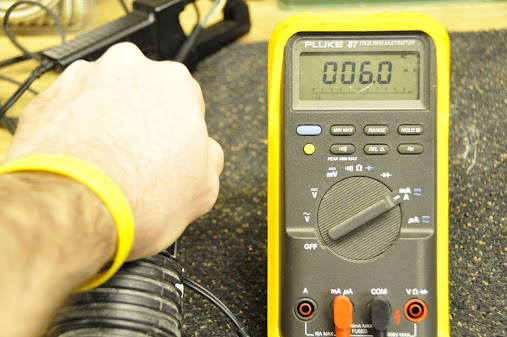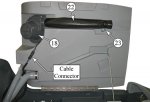Pressure is force per unit area.Yes, we can agree on that...caviate being the obvious that "pressure" means "pressure differential".
Run with it. I am open to hearing your discussion without nitpicking.
Still with it?
Pressure is force per unit area.Yes, we can agree on that...caviate being the obvious that "pressure" means "pressure differential".
Run with it. I am open to hearing your discussion without nitpicking.
Well, yes and no. Pressure is force per unit area, but the term "area" will cancel out when dealing with a vertical column of fluid. I will humor you and say go ahead with this line of discovery. Maybe I am just jumping ahead.Pressure is force per unit area.
Still with it?
I happen to have this squirrel cage fan in my basement.
With it operating as unrestricted as possible at full speed. 4.8 amps
With it operating with only the the inlet blocked at full speed 3.8 amps
With it operating with only the outlet blocked at full speed 3.7 amps
I have to assume you have switched the topic to positive displacement pumps and not centrifugal blowers.


It's just yes. No qualification and no caveats. No ifs. No buts.Well, yes and no.
Ya, We get it. Get to your point.It's just yes. No qualification and no caveats. No ifs. No buts.
Just force per unit area.
The point is do you now get it? Really get it?Ya, We get it. Get to your point.
I affirmed the question with blue bolded text. The caveat stands. Unless the caveat is of significance to you, move on!The point is do you now get it? Really get it?
During this lull in discussion (it's late at night in the UK) I would like to reiterate my point of contention here, just for clarity.Careful!
You'll have him again asserting that it relates to pumps and vertical lift.
I gave a formula for power. The basic physics is fairly simple.
Power is force times distance divided by time.
I stand behind that and I want to address it.I believe the discussion is being a little over simplified.
Good.I affirmed the question with blue bolded text. .
Yes, I am ok with this. CONTINUE!Good.
So let's look at units for pressure.
I prefer SI so let's go with that.
Force per unit area is thus Newtons per square metre.
N/m2
Or the Pascal.
Pa.
Still OK with that?
Good man.Yes, I am ok with this.
No, which is part of the reason I mentioned last night that area was not part of this equation. It cancels out.Good man.
Does the Pa make any reference to direction?
But you accept that pressure is force per unit area so how can you reasonably exclude area as part of that definition?No, which is part of the reason I mentioned last night that area was not part of this equation.
Gee?!?! How did I know you would pull something liike this?But you accept that pressure is force per unit area so how can you reasonably exclude area as part of that definition?
You hammered against this caveat several times last night, and I refused to budge. Now you want to pretend I never said it?Well, yes and no. Pressure is force per unit area, but the term "area" will cancel out when dealing with a vertical column of fluid. I will humor you and say go ahead with this line of discovery. Maybe I am just jumping ahead.
That being said, YES, I confirm that pressure is force per unit area.
However, today I took a closer look at his picture and realized it was a "backward curve" impeller. These are also called "Non-overloading" impellers. They get that name because they will not overload the motor when fully blocked--regardless whether it is the inlet or outlet. They are designed such that changes in pressure differential does not change loading.
I want to thank you for the reminder, because I had completely forgotten about this until I read your posting. :thumbsup:I have never run across a centrifugal pump, or blower that does not unload when input or output is blocked regardless of the impeller type, .......

